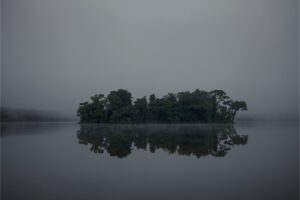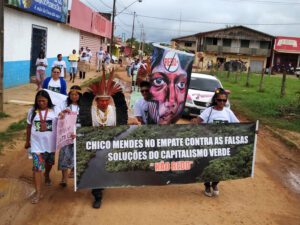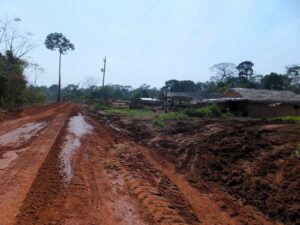Land is increasingly being grabbed for carbon removal and offsets leading to displacement, conflicts and financialization of nature
Indigenous and rural women in the Brazilian state of Acre have experienced how market-based forest conservation schemes undermine their ways of life and ability to caring for their ecosystems. The REDD+ program was introduced by state authorities, donors, and big conservation groups with the promise of combining better protection of forests with reduced greenhouse gas emissions, as well as income and other benefits for rural communities. The program, however, has led to more land grabs, deforestation, and extraction while destroying communities’ traditional livelihoods, farming and food systems. Instead of an increased legal protection of Indigenous and rural women’s tenure rights, it has placed their life, bodies, and territories into markets. Worldwide, communities face a huge expansion of carbon offset projects from forests and soils driven by states’ and corporate ‘net-zero’ targets. The Tenure Guidelines contain provisions that support Indigenous and rural women’s struggles for their rights, self-determination, and ways of life, which are critical to ecosystem protection in the face of the climate and biodiversity crises.
The broken promises of REDD+ programs
The state of Acre, located in the western part of the Brazilian Amazon and 80% covered by forest, started a project under the REDD+ (Reducing emissions from deforestation and forest degradation) program in 2012. The project, funded by the German development bank KfW, was promoted among Indigenous Peoples and rural communities as a way to turn environmental forest management practices into economic and new livelihood opportunities. Between 2012 and 2020, KfW, in charge of the German REDD ‘Early Movers’ program, poured more than USD 25 Million into the project. Soon, it became a model to showcase the benefits of environmental protection through payments to forest users who adopt practices that contribute to the conservation of so-called ecosystem services, namely forests’ carbon capture.
But while ministers as well as representatives of international institutions and large conservation NGOs poured into the region to see the formula that supposedly reconciled economic development with environmental protection and climate benefits, the reality for local communities turned out to be very different. Indeed, the promised benefits did not materialize. What is more, the projects even created new problems, especially for women.
Firstly, the introduction of REDD+ projects was not accompanied by systematic demarcation of community lands as a basis for the legal protection for their tenure rights and systems. In addition, whereas financial benefits did materialize, in most cases these did not stay in the communities but benefited external agents who acted as brokers or who set up NGOs in the cities in order to manage the complex system of carbon accounting at the basis of REDD+ payments. To be eligible to receive some of the financial benefits, some community members began to create their own organizations, but this came at the cost of altering the social fabric and fragmenting the communities.
Local people have also complained about a lack of effective participation in the design and management of the projects. Indigenous women were particularly discriminated against and invisibilized, according to their own organizations. In some cases, women were targeted by special training courses in what local organizations have referred to as ‘purplewashing’, i.e. using activities focusing on gender equality as a way of giving a more responsible face to compensation schemes, which promote models of relations with nature that in and of themselves are patriarchal and excluding.
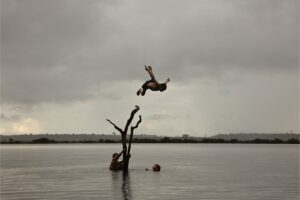
A group of children from an indigenous community play in the Amazon River. / Toni Arnau – RUIDO Photo
The establishment and implementation of REDD+ projects in Acre fundamentally altered the ways of life of communities and undermined their self-determination and food sovereignty. For example, communities were informed that they would be paid so-called ‘green grants’ under the condition that they would no longer cut or burn any trees, as part of their traditional way of small-scale food production in the forest. The projects thus forbid them to pursue their traditional livelihoods, which are linked to opening parts of the forests for food production. Whereas these practices are based on traditional knowledge and carried out in respect of natural balances, abandoning them meant that communities started to buy most of their food, and even became dependent on donations of industrial food. Losing their food-related practices has come along with declining nutrition and has also entailed a huge cultural loss, as women ceased to pass on the age-old knowledge related to agroecological food production to the younger generations.
In some cases, in addition to receiving grants for not cutting down any trees, communities were included into re/afforestation programs. Under such schemes, seedlings were distributed to local people who were then supposed to plant them. However, without any additional support, such schemes turned out to put the burden on communities who were already struggling with the manifold challenges arising from the projects.
The loss of traditional ties within the communities, their relationship to the living environment, leading to the destruction of livelihoods and the impoverishment of many people, ended up forcing them to seek other ways of making a living. Whereas some people started to parcel the land and sell it, others started to sell wood, thus increasing deforestation, rather than reducing it. The loss of their forests particularly affected women who often pursued livelihoods related to the use of forest products, such as medicinal plants or using creepers for handicraft. Indeed, rural women in Acre and other parts of Brazil often engage in ‘extrativismo’, which refers to a traditional way of life defined by the harvesting of non-timber forest products, often in combination with subsistence agriculture. One example is the extraction of latex from rubber trees growing inside the forest, also called rubber tapping.
The destruction of communities’ social fabric and their traditional ways of life has also led to distress migration into the cities. Once again, women and girls have been particularly affected. In many cases, the only way for them to make a living is to engage in illicit activities or to sell their bodies for exploitation.
The establishment and implementation of REDD+ projects in Acre fundamentally altered the ways of life of communities and undermined their self-determination and food sovereignty.
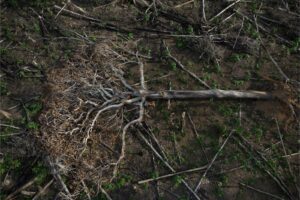
Felled tree in a deforested area in the Brazilian Amazon. / © Toni Arnau – RUIDO Photo
